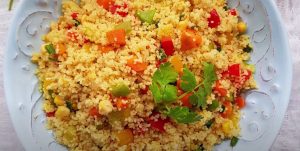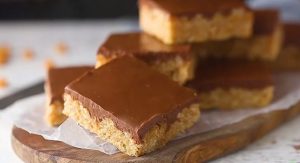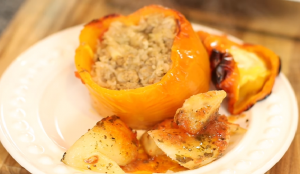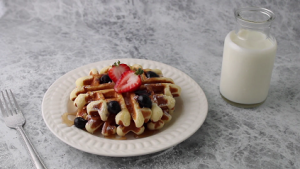This peanut coconut chutney recipe is a delightful blend of flavors. It is a versatile accompaniment for a variety of dishes, from dosas to idlis. With its unique combination of roasted peanuts, coconut, and spices, this chutney is sure to impress with its depth of flavor and delightful texture.
Some of the ingredients, like the amchur powder and red chilis, might not be commonly found in a regular supermarket. Amchur powder, also known as dried mango powder, is a fruity spice powder made from dried unripe green mangoes and is used as a citrusy seasoning. It can be found in any Indian grocery store. Red chilis can also be found in most grocery stores, but if you can't find them, you can substitute with chili flakes.
Ingredients for the Peanut Coconut Chutney Recipe
Red chilis: These chilis add a spicy kick to the chutney. You can adjust the amount according to your taste.
Fresh ginger: Adds a refreshing zing to the chutney.
Garlic: Bolsters the flavor profile of the chutney with its pungent taste.
Peanut: Serve as the main protein in this chutney and gives it a hearty texture.
Coconut: Adds a tropical sweetness and creaminess to the chutney.
Amchur powder: Adds a tangy flavor to the chutney.
Salt: Enhances all the other flavors in the chutney.
Water: Adjusts the consistency of the chutney.
One reader, Erik Prescott says:





This peanut coconut chutney recipe is a game-changer! The blend of peanuts and coconut creates a rich and creamy texture, while the hint of spice from the red chilis adds a perfect kick. It's incredibly versatile and pairs well with so many dishes. A must-try for all food enthusiasts!
Techniques Required for Making Peanut Coconut Chutney
How to dry roast red chilis, ginger, and garlic: Dry roasting the red chilis, ginger, and garlic helps to enhance their flavors and aromas. This can be done by heating a pan over medium heat and adding the ingredients, stirring constantly until they become fragrant and slightly browned.
How to blend the ingredients together: After dry roasting the red chilis, ginger, and garlic, place them in a blender along with the peanuts, coconut, and amchur powder. Blend until a smooth paste is formed, adding water as needed to reach the desired consistency.
How to temper the chutney (if desired): Tempering involves heating oil or ghee in a pan and adding mustard seeds, curry leaves, and dried red chilis until they sizzle and become fragrant. This mixture is then poured over the prepared chutney to enhance its flavor.
How To Make Peanut Coconut Chutney
Pair with meals this easy-to-make and tasty coconut chutney that offers a blend of gingery and nutty with roasted peanuts, ginger, chili, and amchur powder!
Serves:
Ingredients
- 4red chilis
- 1fresh ginger,1-inch
- 1clovegarlic
- ½cuppeanut,roasted
- ¼cupcoconut,desiccated
- 1tspamchur powder,or a small bit of tamarind
- salt,to taste
- water,as needed
Instructions
-
Dry roast red chilis, ginger, and garlic. Let cool.
-
Now, blend all the ingredients- the peanut, coconut, and amchur powder- together.
-
Adding water to desired consistency.
-
Temper if desired.
-
Enjoy!
Nutrition
- Calories: 136.76kcal
- Fat: 10.81g
- Saturated Fat: 2.67g
- Monounsaturated Fat: 4.55g
- Polyunsaturated Fat: 2.90g
- Carbohydrates: 7.16g
- Fiber: 2.56g
- Sugar: 1.79g
- Protein: 5.31g
- Sodium: 106.88mg
- Calcium: 22.07mg
- Potassium: 231.79mg
- Iron: 1.11mg
- Vitamin A: 3.33µg
- Vitamin C: 4.20mg
Technique Tip for Perfect Peanut Coconut Chutney
When dry roasting the red chilis, ginger, and garlic, ensure that you do it over low heat and keep stirring to prevent them from burning. The aim is to release their flavors without making them bitter. Also, when blending the ingredients, add water gradually to control the consistency of your chutney. Too much water can make it too thin, while too little can make it too thick. Adjust according to your preference.
Time-Saving Tips for Making Chutney
Prep ahead: Chop and measure all your ingredients in advance to streamline the cooking process.
One-pot wonders: Opt for recipes that allow you to cook everything in a single pot or pan to minimize cleanup.
Batch cooking: Make larger quantities of the recipe and freeze the extra portions for future use.
Kitchen organization: Keep your kitchen well-organized to easily locate ingredients and utensils while cooking.
Time-saving gadgets: Utilize kitchen gadgets like food processors and blenders to speed up the prep work.
Efficient multitasking: Plan your cooking process to multitask efficiently, such as chopping vegetables while something is simmering.
Substitute Ingredients For Peanut Coconut Chutney Recipe
red chilis - Substitute with green chilis: Green chilis have a milder flavor compared to red chilis, so they can be used as a substitute if you prefer a less spicy chutney.
peanut - Substitute with almond: Almonds can be used as a substitute for peanuts to create a similar nutty flavor in the chutney.
coconut - Substitute with cashews: Cashews can provide a creamy texture and nutty flavor similar to coconut in the chutney.
amchur powder - Substitute with tamarind paste: Tamarind paste can be used as a substitute for amchur powder to add a tangy and sour flavor to the chutney.
Presenting Peanut Coconut Chutney
Elevate the plating: When presenting the peanut coconut chutney, focus on creating a visually appealing plate. Use clean lines, minimalism, and negative space to highlight the vibrant colors and textures of the chutney.
Incorporate contrasting textures: Add a crunchy element, such as a delicate papadum or crispy curry leaves, to provide a textural contrast to the creamy chutney.
Utilize vibrant garnishes: Incorporate colorful garnishes like finely chopped cilantro or a sprinkle of pomegranate seeds to add a pop of freshness and visual interest to the dish.
Focus on precision: Pay attention to the placement of each component on the plate, ensuring that every element is meticulously arranged to showcase the chutney's flavors and elevate the overall presentation.
Consider the serving vessel: Choose a sophisticated and complementary serving vessel, such as a sleek ceramic dish or a polished copper bowl, to enhance the elegance of the presentation.
Emphasize balance and harmony: Aim for a balanced composition, considering color, shape, and negative space to create a visually harmonious presentation that reflects the chutney's complex flavors.
Essential Tools for Making Chutney
- Food processor: A food processor is a versatile kitchen appliance that can be used for chopping, blending, pureeing, and grinding ingredients. It is perfect for making the peanut coconut chutney as it can easily blend the peanuts and coconut to the desired consistency.
- Mixing bowl: A mixing bowl is essential for combining the ingredients together. It provides a spacious and convenient vessel for mixing the blended peanut and coconut mixture with the other spices and seasonings.
Storing and Freezing Peanut Coconut Chutney
Let the peanut coconut chutney cool completely before storing it in an airtight container. This will prevent moisture from forming inside the container, which can lead to spoilage.
Store the chutney in the refrigerator for up to 1 week. The cool temperature will help preserve its freshness and prevent the growth of harmful bacteria.
If you want to keep the chutney for longer, consider freezing it:
- Transfer the cooled chutney into a freezer-safe container or zip-lock bag, leaving some headspace for expansion during freezing.
- Label the container with the date of preparation and the contents.
- Place the container in the freezer, where the chutney can be stored for up to 3 months.
To thaw the frozen chutney, transfer it from the freezer to the refrigerator and let it defrost overnight. Once thawed, give it a good stir to redistribute any separated ingredients.
Note: The texture of the chutney may change slightly after freezing and thawing, but the flavor should remain intact. If you notice any signs of spoilage, such as mold growth or an off-odor, discard the chutney immediately.
How To Reheat Leftover Chutney
Reheat the leftover peanut coconut chutney in a small saucepan over low heat, stirring occasionally until it reaches the desired temperature. This method ensures even heating and prevents the chutney from burning or sticking to the bottom of the pan.
For a quick and easy reheating option, transfer the chutney to a microwave-safe bowl and heat it in the microwave for 30-second intervals, stirring between each interval, until it is heated through. Be careful not to overheat the chutney, as it may cause the peanuts and coconut to develop a bitter taste.
If the chutney has thickened during storage, add a small amount of water, coconut milk, or vegetable broth to thin it out while reheating. This will help restore its original consistency and make it easier to spread or drizzle over your favorite dishes.
For a fresh and zesty twist, add a squeeze of lime juice or a pinch of grated ginger to the chutney while reheating. These additions can help brighten up the flavors and give the leftover chutney a new lease on life.
If you have a large quantity of leftover chutney, consider reheating only the portion you need and storing the rest in the refrigerator. This will help preserve the quality and freshness of the chutney for future meals.
Random Fact about Peanut Coconut Chutney
Peanut coconut chutney is a popular South Indian condiment that is often served with dosa, idli, or vada. It is a versatile and flavorful accompaniment that adds a nutty and spicy kick to the meal.
Is Making Chutney at Home Economical?
The cost-effectiveness of this peanut coconut chutney recipe is quite high. Peanuts and coconut are affordable and readily available ingredients, making this recipe budget-friendly for a household. The addition of red chilis and ginger provides a burst of flavor without breaking the bank. The approximate cost for a household of 4 people would be around $5. Overall, this recipe offers a delicious and economical way to elevate your meals, earning a solid 8/10 rating for its affordability and taste.
Is Peanut Coconut Chutney Healthy or Unhealthy?
The peanut coconut chutney recipe is a relatively healthy condiment option, offering several nutritional benefits:
- Peanuts are a good source of protein, healthy fats, and various vitamins and minerals
- Coconut provides healthy medium-chain triglycerides (MCTs) and fiber
- Ginger and garlic have anti-inflammatory and immune-boosting properties
- Red chilis contain capsaicin, which has potential metabolism-boosting effects
However, there are a few aspects of the recipe that could be improved to make it even healthier:
- The recipe relies heavily on peanuts, which are high in calories. Moderation is key when consuming this chutney.
- The addition of salt may be a concern for those watching their sodium intake.
To further enhance the nutritional value of this chutney, consider the following suggestions:
- Incorporate more vegetables into the recipe, such as roasted bell peppers or tomatoes, to increase the fiber and nutrient content
- Experiment with using a mix of nuts and seeds, like almonds or sesame seeds, to provide a wider range of nutrients and healthy fats
- Add freshly squeezed lemon juice instead of amchur powder for a burst of vitamin C and natural tanginess
- Use Himalayan pink salt or sea salt instead of regular table salt, as they contain trace minerals that can benefit overall health
- Consider adding a handful of fresh herbs, like cilantro or mint, to boost the flavor and provide additional antioxidants
Editor's Thoughts on This Delightful Chutney Recipe
This peanut coconut chutney recipe is a delightful fusion of flavors. The combination of roasted red chilis, ginger, and garlic adds a depth of heat and aroma, while the peanuts and coconut bring a rich, creamy texture. The addition of amchur powder provides a tangy twist, balancing the flavors perfectly. The chutney can be customized to preferred consistency, making it versatile for various dishes. Overall, this recipe offers a unique and delicious take on traditional chutney, perfect for adding a burst of flavor to any meal.
Enhance Your Peanut Coconut Chutney Recipe with These Unique Side Dishes:
Alternative Chutney Recipes to Try
Suggested Main Courses and Desserts to Pair with Chutney
Why trust this Peanut Coconut Chutney Recipe:
This recipe offers a unique fusion of flavors, combining the richness of peanut with the tropical sweetness of coconut. The addition of ginger and garlic brings depth and warmth, while the tangy amchur powder adds a delightful zing. The use of traditional dry roasting techniques enhances the aromatic profile of the ingredients. With a balanced blend of spices and the option to customize the consistency, this chutney promises a harmonious and satisfying accompaniment to a variety of dishes. Trust in the expertise behind this recipe to elevate your culinary experience.
Was this page helpful?
Have your own special recipe to share? Submit Your Recipe Today!



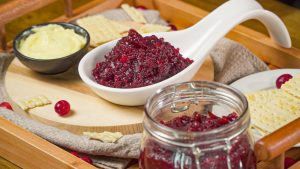
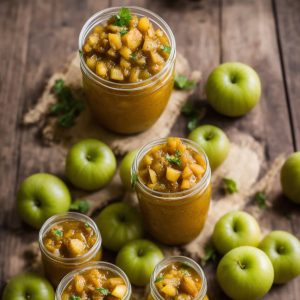
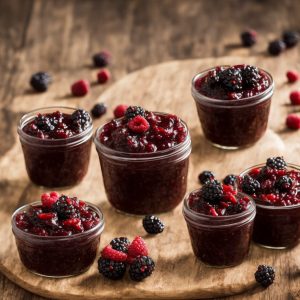
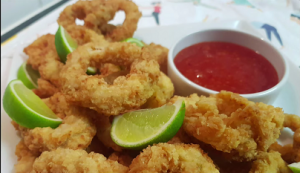
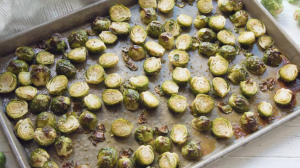
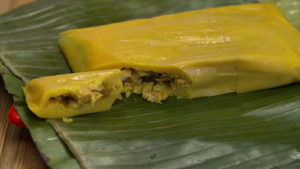
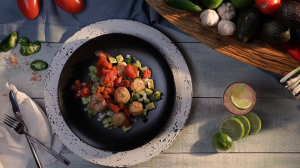
recipe-300x168.png)
